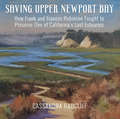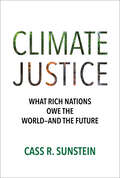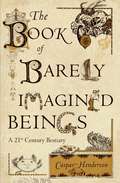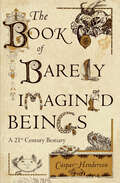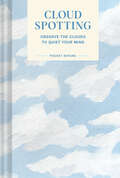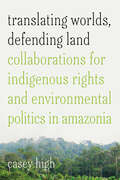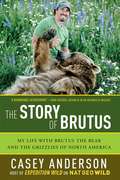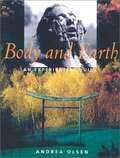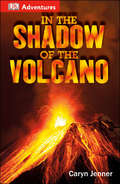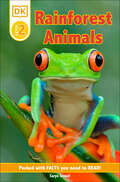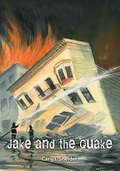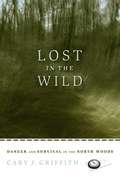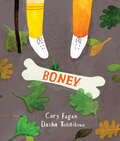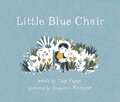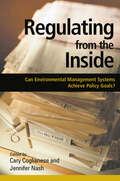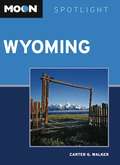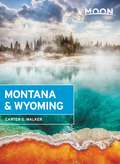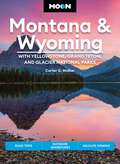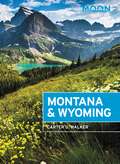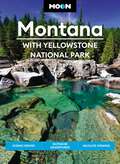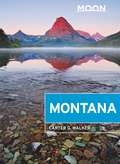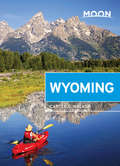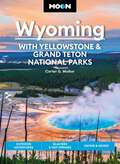- Table View
- List View
Saving Upper Newport Bay: How Frank and Frances Robinson Fought to Preserve One of California's Last Estuaries
by Cassandra RadcliffDuring Orange County's population boom in the early 1960s, the Robinson family moved to Newport Beach. A short walk from their home was Upper Newport Bay, where they and their neighbors could play on North Star Beach, water ski on the bay's calm water, or dig in the shallow mudflats for fresh clams for dinner. But land developers and local government officials had a different use for the open space in mind—build a private harbor much like the bustling lower Newport Bay and Balboa Island. In 1963, 14-year-old Jay Robinson rode his bike down to North Star Beach and found a newly erected “private property” sign. His parents, Frank and Frances Robinson, would soon find themselves embroiled in one of the most important ecological battles in California, with friends, neighbors, newspapers, the government, and the courts all taking sides. Saving Upper Newport Bay is the story of two ordinary people's life-changing journey, which ultimately impacted the history and ecology of southern California. This book was produced on the 50th anniversary of The Newport Bay Conservancy, which focuses exclusively on the conservation and restoration of Upper Newport Bay. Included are full color photos depicting the history of the bay.
Climate Justice: What Rich Nations Owe the World—and the Future
by Cass R. SunsteinThe social cost of carbon: The most important number you've never heard of—and what it means.If you're injuring someone, you should stop—and pay for the damage you've caused. Why, this book asks, does this simple proposition, generally accepted, not apply to climate change? In Climate Justice, a bracing challenge to status-quo thinking on the ethics of climate change, renowned author and legal scholar Cass Sunstein clearly frames what’s at stake and lays out the moral imperative: When it comes to climate change, everyone must be counted equally, regardless of when they live or where they live—which means that wealthy nations, which have disproportionately benefited from greenhouse gas emissions, are obliged to help future generations and people in poor nations that are particularly vulnerable. Invoking principles of corrective justice and distributive justice, Sunstein argues that rich countries should pay for the harms that they have caused and that all of us are obliged to take steps to protect future generations from serious climate-related damage. He shows how “choice engines,” informed by artificial intelligence, can enable people to save money and to reduce the harms they produce. The book casts new light on the “social cost of carbon,” the most important number in climate change debates—and explains how intergenerational neutrality and international neutrality can help all nations, above all the United States and China, do what must be done.
Worst-Case Scenarios
by Cass R. SunsteinNuclear bombs in suitcases, anthrax bacilli in ventilators, tsunamis and meteors, avian flu, scorchingly hot temperatures: nightmares that were once the plot of Hollywood movies are now frighteningly real possibilities. How can we steer a path between willful inaction and reckless overreaction? Cass Sunstein explores these and other worst-case scenarios and how we might best prevent them in this vivid, illuminating, and highly original analysis. Singling out the problems of terrorism and climate change, Sunstein explores our susceptibility to two opposite and unhelpful reactions: panic and utter neglect. He shows how private individuals and public officials might best respond to low-probability risks of disaster—emphasizing the need to know what we will lose from precautions as well as from inaction. Finally, he offers an understanding of the uses and limits of cost–benefit analysis, especially when current generations are imposing risks on future generations. Throughout, Sunstein uses climate change as a defining case, because it dramatically illustrates the underlying principles. But he also discusses terrorism, depletion of the ozone layer, genetic modification of food, hurricanes, and worst-case scenarios faced in our ordinary lives. Sunstein concludes that if we can avoid the twin dangers of overreaction and apathy, we will be able to ameliorate if not avoid future catastrophes, retaining our sanity as well as scarce resources that can be devoted to more constructive ends.
The Book of Barely Imagined Beings
by Caspar HendersonFrom medieval bestiaries to Borges s "Book of Imaginary Beings," we ve long been enchanted by extraordinary animals, be they terrifying three-headed dogs or asps impervious to a snake charmer s song. But bestiaries are more than just zany zoology they are artful attempts to convey broader beliefs about human beings and the natural order. Today, we no longer fear sea monsters or banshees. But from the infamous honey badger to the giant squid, animals continue to captivate us with the things they can do and the things they cannot, what we know about them and what we don t. With "The Book of Barely Imagined Beings," Caspar Henderson offers readers a fascinating, beautifully produced modern-day menagerie. But whereas medieval bestiaries were often based on folklore and myth, the creatures that abound in Henderson s book from the axolotl to the zebrafish are, with one exception, very much with us, albeit sometimes in depleted numbers. "The Book of Barely Imagined Beings "transports readers to a world of real creatures that seem as if they should be made up that are somehow more astonishing than anything we might have imagined. The yeti crab, for example, uses its furry claws to farm the bacteria on which it feeds. The waterbear, meanwhile, is among nature s extreme survivors, able to withstand a week unprotected in outer space. These and other strange and surprising species invite readers to reflect on what we value or fail to value and what we might change. A powerful combination of wit, cutting-edge natural history, and philosophical meditation, "The Book of Barely Imagined Beings" is an infectious and inspiring celebration of the sheer ingenuity and variety of life in a time of crisis and change. "
The Book of Barely Imagined Beings: A 21st Century Bestiary
by Caspar Henderson“Caspar Henderson takes us on an eye-opening tour of real animals that no sane human could ever have invented.” —Frans de Waal, New York Times–bestselling authorWith The Book of Barely Imagined Beings, Caspar Henderson offers readers a fascinating, beautifully produced modern-day menagerie. But whereas medieval bestiaries were often based on folklore and myth, the creatures that abound in Henderson’s book—from the axolotl to the zebrafish—are, with one exception, very much with us, albeit sometimes in depleted numbers. The Book of Barely Imagined Beings transports readers to a world of real creatures that seem as if they should be made up—that are somehow more astonishing than anything we might have imagined. The yeti crab, for example, uses its furry claws to farm the bacteria on which it feeds. The waterbear, meanwhile, is among nature’s “extreme survivors,” able to withstand a week unprotected in outer space. These and other strange and surprising species invite readers to reflect on what we value—or fail to value—and what we might change.A powerful combination of wit, cutting-edge natural history, and philosophical meditation, The Book of Barely Imagined Beings is an infectious and inspiring celebration of the sheer ingenuity and variety of life in a time of crisis and change.“The Book of Barely Imagined Beings is one that Pliny would have envied, Darwin applauded, and Borges relished . . . In these days of doom and gloom, I can think of nothing more rejoicing than Caspar Henderson’s magical book.” —Alberto Manguel, author of A History of Reading“Magnificent, bravura, beautiful and astoundingly interesting.” —The Sunday Times“Spell-binding, brilliantly executed, extraordinary.” —The Guardian
Pocket Nature Series: Observe the Clouds to Quiet Your Mind (Pocket Nature Ser.)
by Casey SchreinerA take-anywhere guide to the mindful practice of cloud watching.Press pause, step outside, and look up. There is so much to gain by simply watching the clouds go by. This pocket guide invites you to tap into the calming power of nature through the contemplative practice of cloud spotting.Discover different types of clouds, unique sky phenomena, and the many benefits that come from slowing down long enough to notice them. Perfect for nature-lovers and outdoorsy types, the petite size makes this book easy to toss in a backpack and take on an adventure. New and experienced meditators alike will appreciate the simple approach to mindfulness. Filled with remarkable tidbits and soothing practices, CLOUD SPOTTING reminds us that the wonders of nature abound if we just take the time to look.NATURE AS THERAPY: The activities are easy and accessible to everyone who enjoys spending time outside. CLOUD SPOTTING is as applicable for avid adventurers as it is for people trying to spend more time outside, and for experienced meditators as well as those new to the practice.UNIQUE CONTENT: The hyper-specific topics in this series stand apart from other general nature books in this category, offering clear gifting moments and recipients.MAKES A LOVELY GIFT: The POCKET NATURE series makes a thoughtful gift for a wide range of folks for nearly any occasion, gifted alongside outdoor gear or tucked in a holiday stocking.Perfect for:Cloud appreciators, including those who subscribe to the Cloud-a-Day newsletter or are members of the Cloud Appreciation SocietyNature loversMindfulness practitionersMeditators and those looking for an easy way to start a meditation practicePeople looking to slow down and disconnect, and/or spend more time outsidePeople who purchased MINDFULNESS CARDS, NATURE MEDITATIONS, A CLOUD A DAY
Translating Worlds, Defending Land: Collaborations for Indigenous Rights and Environmental Politics in Amazonia
by Casey HighIn 2019, after decades of ecological damage from oil, Waorani people took to the streets of Amazonian Ecuador to protest drilling on their ancestral lands. Working with international activists, lawyers, and other Indigenous groups, they successfully sued the government for selling oil concessions without prior consent. Placing their struggle for territorial autonomy in the global spotlight, this unprecedented legal victory for environmental rights by an Indigenous people reflected the new forms of collaboration emerging in contemporary Amazonia. Translating Worlds, Defending Land explores how Waorani collaborations, whether with environmentalists or academic researchers, bring about new possibilities, challenges, and imaginative horizons. Based on fieldwork over a period of twenty-five years, Casey High interrogates what these engagements mean for Indigenous communities and how they offer critical reflection on collaboration as a concept, method, and practice. The alliances, misunderstandings, and conflicts that emerge in these contexts challenge the assumption that productive collaborations reflect—or require—shared purposes, generating important implications for an engaged anthropology open to reconsidering what constitutes ethnographic knowledge and who it is for. As some young Waorani adults become not just community leaders or environmental citizens, but also skilled researchers and ethnographers, translating between Indigenous understandings of land and the Western language conservation, they create a powerful new voice in international environmental politics.
The Story of Brutus: My Life with Brutus the Bear and the Grizzlies of North America
by Casey AndersonThe heart-warming story of the incredible friendship between National Geographic star Casey Anderson and an 800-pound grizzly bear named Brutus. Casey Anderson, the host of National Geographic's Expedition Grizzly, met a month-old bear cub in a wildlife preserve in 2002, whom he affectionately named Brutus. Little Brutus was destined to remain in captivity or, more likely, even euthanized due to overpopulation at the preserve. Anderson, already an expert in animal rescue and rehabilitation, just could not let that happen to Brutus, who looked like a "fuzzy Twinkie." From the beginning it was clear something special existed between the two. And so, Anderson built the Montana grizzly encounter in Bozeman, Montana, especially for Brutus, so that he, and others like him, could grow up "being a bear." And so the love story began. When together, Anderson and Brutus will wrestle, swim, play, and continue to act as advocates for grizzly protection and education, be it through documentaries like Expedition Grizzly, appearances on Oprah or Good Morning America, or in this inspiring book, which promises to be an intimate look into Anderson's relationship with Brutus and a call to action to protect these glorious animals and the natural world they live in. The Story of Brutus proves that love and friendship knows no bounds and that every care must be taken to protect one of nature's noblest creatures.
Body And Earth: An Experiential Guide
by Andrea Olsen Bill McKibben Caryn McHose“Body is our first environment,” writes Andrea Olsen. “It is the medium through which we know the earth.” In a remarkable integration of environmental science, biology, meditation, and creative expression, Olsen, a dancer who teaches in the environmental studies program at Middlebury College, offers a guide to a holistic understanding of person and place. Part workbook, part exploration, Body and Earth considers the question of how we can best, most responsibly inhabit both our bodies and our planet. Olsen displays an easy command of fields as diverse as geology, biochemistry, ecology, and anatomy as she explores the ways in which our bodies are derived from and connected to the natural world. But Body and Earth is not just a lesson, it is also an investigation. Arranged as a 31-day program, the book offers not only a wealth of scientific information, but also exercises for both exploring the body and connecting with place; illustrations and works of art that illuminate each chapter’s themes; and Olsen’s own meditations and reflections, connecting the topics to her personal history and experience. Olsen insists that neither body nor landscape are separate from our fundamental selves, but in a culture which views the body as a mechanism to be trained and the landscape as a resource to be exploited, we need to learn to see again their fundamental wholeness and interconnection. Through hard data, reflection, exercises, and inspiration, Body and Earth offers a guide to responsible stewardship of both our planet and our persons.
DK Adventures: In the Shadow of the Volcano (DK Adventures)
by Caryn JennerIn a modern-day adventure of an eruption of Mount Vesuvius, a volcanologist and her son are caught up in the drama as the volcano re-awakens. The mayor is reluctant to cancel the village festival despite her warnings of an imminent eruption. Will he and the other villagers escape in time, before the explosive volcano wreaks havoc? Find out in DK Adventures: In the Shadow of the Volcano. DK Adventures are an innovative mix of narrative and nonfiction for kids ages 8-11 featuring engaging, action-packed stories that help kids build their skills in vocabulary, grammar, comprehension, and critical thinking while developing a love of reading. With diaries, recipes, poetry, instructions, graphics, or songs, the genre spreads in each DK Adventures title enhance the story and reinforce curriculum learning, while the expansive range of entertaining nonfiction subjects will appeal to boys and girls everywhere. Supports the Common Core State Standards.
DK Reader Level 2: Packed With Facts You Need To Read! (DK Readers Level 2)
by Caryn JennerA colorful rainforest adventure awaits! You&’ll meet the many wild and even endangered animals that call the rainforest their home.Did you know that jaguars can live 12-15 years in the wild, and that a toucan's beak looks heavy but is actually hollow and light? Discover many more fascinating facts about rainforest animals in this children&’s nature book!This Level 2 reader book is perfect for children ages 5-7 who are developing their reading skills, and are fascinated by animals and the rainforest. Inside, you&’ll find: • Amazing photographs that break up the text for young readers who are still building their confidence. • Labeled pictures that build a child&’s experience of reading different non-fiction genres. • Fun quizzes that support comprehension skills. Packed with incredible creatures, this rainforest animal book will make reading fun and engaging for children! From chirping birds and croaking frogs to fearsome bears and prowling tigers, they will learn about all the amazing animals of the rainforest! Fun facts are paired with incredible images, providing an ideal balance of words and pictures for young readers. Developed in consultation with leading literacy experts, this animal encyclopedia for children is perfect for helping build general knowledge at the same time as learning to read. It also introduces them to climate change and promotes awareness of the environment. With engaging topics and fun, interactive pages, this four-level series of children&’s educational books from DK will help build a lifelong love of reading. It covers a vast range of fascinating subjects to support children as they become confident readers. More titles include Reader Level 2 Hello Hedgehog, Reader Level 3 I&’m an Activist, and Reader Level 3 Sporting Greats.
Jake and the Quake
by Cary SneiderWhen Jake finds an unusual rock in the cliffs under the Golden Gate bridge, he embarks on an adventure of discovery that will bring him new friends, new knowledge, and even the confidence to face a devastating earthquake.
Gunflint Falling: Blowdown in the Boundary Waters
by Cary J. GriffithStories from survivors of the Boundary Waters Canoe Area Wilderness&’s epochal weather disaster On July 4, 1999, in the Boundary Waters Canoe Area Wilderness (BWCAW), a bizarre confluence of meteorological events resulted in the most damaging blowdown in the region&’s history. Originating over the Dakotas, the midsummer windstorm developed amid unusually high heat and water-saturated forests and moved steadily east, bearing down on Fargo, North Dakota, and damaging land as it crossed the Minnesota border. Gunflint Falling tells the story of this devastating storm from the perspectives of those who were on the ground before, during, and after the catastrophic event—from first-time visitors to the north woods to returning paddlers to Forest Service Rangers. The pre-dawn forecasts from the National Weather Service in Duluth for that Sunday of the holiday weekend predicted the day would be &“warm and humid. Partly sunny with a thirty percent chance of thunderstorms.&” But as the afternoon and evening settled over the Boundary Waters, the first eyewitness accounts began to tell a dramatic and terrifying story. Five friends camping on Lake Polly watched in wonder as the sky turned green and the winds began to whip. They scrambled to pull canoes on shore and secure tarps when a tree snapped and struck one of them in the head, rendering her unconscious. Three women enjoying their last day of a camping trip near the end of the Gunflint Trail took shelter in their tent as winds increased. Water drenched the nylon walls as trees crashed around them, one flattening the tent and pinning a woman beneath its weight. A family vacationing at their cabin dodged falling trees and strained against straight-line winds as they sprinted from the cabin to the safest place they knew: a crawl space underneath it. They watched in awe as trees snapped and toppled, their twisted root balls torn out of the water-logged earth—as they prayed their cabin would hold. By the time the storm began to subside, falling trees had injured approximately sixty people, and most needed to be medevacked to safety. Amazingly, no one died. The historic storm laid down timber that would later blaze in the Ham Lake fire of 2007, ultimately reshaping the region&’s forests in ways we have yet to fully understand.
Lost in the Wild: Danger and Survival in the North Woods
by Cary J. GriffithIn the wilderness, one false step can make the difference between a delightful respite and a brush with death. On a beautiful summer afternoon in 1998, Dan Stephens, a 22-year-old canoeist, was leading a trip deep into Ontario's Quetico Provincial Park. He stepped into a gap among cedar trees to look for the next portage -- and did not return. More than four hours later, Dan awakened with a lump on his head from a fall and stumbled deeper into the woods, confused. Three years later, Jason Rasmussen, a third-year medical student who loved the forest's solitude, walked alone into the Boundary Waters Canoe Area Wilderness on a crisp fall day. After a two-day trek into a remote area of the woods, he stepped away from his campsite and made a series of seemingly trivial mistakes that left him separated from his supplies, wet, and lost, as cold darkness fell. Enduring days without food or shelter, these men faced the full harsh force of wilderness, the place that they had sought out for tranquil refuge from city life. Lost in the Wild takes readers with them as they enter realms of pain, fear, and courage, as they suffer dizzying confusion and unending frustration, and as they overcome seemingly insurmountable hurdles in a race to survive.
Boney
by Cary FaganAnnabelle discovers an animal bone in the woods and decides to make it her new plaything. But nature ends up moving Annabelle in mysterious ways. At first, Boney, as Annabelle names him, makes the perfect companion. While Mom is busy with the baby, Boney and Annabelle share a meal, play at the park, and share a bedtime story before Annabelle tucks Boney into his shoebox-bed for the night. But when creatures run wild through her dreams, Annabelle considers for the first time where Boney really belongs. This thought-provoking story by award-winning picture-book creators Cary Fagan and Dasha Tolstikova encourages a deeper sense of wonder about the natural world and celebrates the wilderness that lives within us all. Key Text Features illustrations Correlates to the Common Core State Standards in English Language Arts: CCSS.ELA-LITERACY.RL.K.3 With prompting and support, identify characters, settings, and major events in a story.
Little Blue Chair
by Cary FaganA sweet, whimsical tale that chronicles the journey of a chair as it changes hands and uses. Perfect for fans of The Good Little Book, Something for Nothing and Virginia Lee Burton's The Little House.Boo's favorite chair is little and blue. He sits in it, reads in it and makes a tent around it...until the day he grows too big for it. His mother puts the little blue chair out on the lawn where a truck driver picks it up. The truck driver sells it to a lady in a junk store where it sits for many years until it's sold and put to use as a plant stand. In the years that follow, the little blue chair is used in many other ways -- on an elephant ride, in a contest, on a Ferris wheel, in a tree...until the day it flies away, borne aloft by balloons, and lands in a garden of daffodils where a familiar face finds it. A charming, beautifully illustrated read-aloud that follows the adventures of a little chair, beginning as the seat of a small child who loves books and circling back to that child's child many years (and bottoms) later.
Regulating from the Inside: Can Environmental Management Systems Achieve Policy Goals (Rff Press Ser.)
by Cary CoglianeseEnvironmental Management Systems (EMSs) offer an approach to regulatory policy that lies somewhere between free-market and traditional command-and-control methods. Worldwide, hundreds of thousands of private firms have adopted or are considering adopting these internally managed systems for improving environmental performance. In the United States, the Environmental Protection Agency has established a special recognition for firms that adopt EMSs. Already, numerous state agencies have proposed or adopted 'green-tier systems' that allow firms with EMSs to be exempted from otherwise applicable requirements. Yet while private- and public-sector interest in EMSs is booming, limited empirical evidence is available about the efficacy of EMSs. To close the gap between advocacy and analysis, Regulating from the Inside brings together cutting-edge work of leading scholars, providing the most comprehensive analysis to date of environmental management systems. Intended to frame the future policy and the research agenda about EMSs, the discussions are organized around two critical questions: How have EMSs worked in firms that have already adopted them? What potential and limitations do they have as policy tools in the future? Addressing the arguments of both advocates and skeptics, the chapters examine why firms adopt EMSs; how firms implement EMSs; how EMSs answer concerns about fairness, corporate social responsibility, and sustainability; and what kind of impact EMSs may have on the global economy.
Moon Spotlight Wyoming
by Carter WalkerMoon Spotlight Wyomingis a 175-page compact guide covering the soaring mountains, narrow valleys, and sweeping plains of Wyoming. Freelance writer and editor Carter G. Walker offers her seasoned advice on must-see attractions, and includes maps with sightseeing highlights so you can make the most of your time. This lightweight guide is packed with recommendations on sights, entertainment, shopping, recreations, accommodations, food, and transportation, as well as easy-to-read maps, making navigating this enchanting state uncomplicated and enjoyable.
Moon Montana & Wyoming: Including Yellowstone And Glacier National Parks (Travel Guide)
by Carter G. WalkerDiscover Montana and Wyoming with Moon Travel Guides!Moon Montana & Wyoming guides you to the best of the wild west, revealing the untold adventures that await under the vast country sky. What you'll find in Moon Montana & Wyoming:Full coverage of both states, including Glacier, Yellowstone, and Grand Teton National Parks, plus coverage of gateway cities like Jackson Hole and BozemanDetailed maps and helpful reference photos throughoutStrategic itineraries for every timeline and budget, curated for outdoor adventurers, culture mavens, history buffs, foodies, and moreMust-see attractions and offbeat ideas: Hit the road to see the stunning scenery of the national parks, and stop in timeless towns where the old West is alive and well. Spot wildlife like wolves, elk, moose, bison, and black bears. Go whitewater rafting or kayaking, or drive the famed Going-to-the-Sun Road. Hike through forests to roaring waterfalls, breathtaking vistas, and secluded lakes. Learn about the region's important Native American history, or discover authentic cowboy culture. Find the best spots for dining, dancing, and local cuisine, from locally raised bison burgers to huckleberry pieThe best road trips in Montana and Wyoming, from a 14-day Greater Yellowstone loop to a 7-day Glacier road tripHonest advice from former wilderness guide, Big Sky expert, and long-time Montana local Carter G. Walker on where to stay, where to eat, and how to get aroundAccurate, up-to-date information including background on the landscape, wildlife, history, and local cultureRecommendations for families, LGBTQ+ travelers, and travelers with disabilitiesWith Moon Montana & Wyoming's myriad activities, practical advice, and local insight on the best things to do and see, you can plan your trip your way.Full list of coverage: Billings and the Big Open, Great Falls and the Rocky Mountain Front, Glacier National Park, Missoula and Western Montana, Butte, Helena, and Southwest Montana, Bozeman and the Gateway to Yellowstone, Yellowstone National Park, Grand Teton National Park, Jackson Hole, Cody, and the Wind Rovers, Sheridan, Devils Tower, and Northeast Wyoming, and Southern WyomingFocusing on the national parks? Try Moon Glacier National Park or Moon Yellowstone & Grand Teton. Continuing west? Try Moon Idaho.
Moon Montana & Wyoming: Road Trips, Outdoor Adventures, Wildlife Viewing (Travel Guide)
by Carter G. WalkerMoon Montana & Wyoming guides you to the best of the old west, revealing the untold adventures that await under the vast country sky. Inside you'll find:Strategic, flexible itineraries for visiting both states, including Yellowstone, Glacier, and Grand Teton National Parks, curated for outdoor adventurers, history buffs, and more The best road trips in Montana and Wyoming, from a 14-day Greater Yellowstone loop to a 7-day Glacier road trip Must-see highlights and outdoor adventures: Hit the road to see the stunning scenery of the national parks, and stop in towns where the Old West is alive and well. Spot wildlife like wolves, elk, moose, bison, and black bears, go whitewater rafting or kayaking, or drive the famed Going-to-the-Sun Road. Hike to roaring waterfalls, breathtaking vistas, and secluded lakes. Learn about the region's important Native American history, discover authentic cowboy culture, or sample the best of western cuisine in Jackson Hole Honest advice from former wilderness guide and longtime Montana local Carter G. Walker on where to stay, where to eat, and how to get around Full-color photos and detailed maps throughoutBackground information on the landscape, wildlife, history, and local culture With Moon Montana & Wyoming's practical advice and local insight, you can plan your trip your way. Focusing on the national parks? Try Moon Glacier National Park or Moon Yellowstone & Grand Teton. About Moon Travel Guides: Moon was founded in 1973 to empower independent, active, and conscious travel. We prioritize local businesses, outdoor recreation, and traveling strategically and sustainably. Moon Travel Guides are written by local, expert authors with great stories to tell—and they can't wait to share their favorite places with you. For more inspiration, follow @moonguides on social media.
Moon Montana & Wyoming: With Yellowstone and Glacier National Parks (Travel Guide)
by Carter G. WalkerMoon Montana & Wyoming guides you to the best of the wild west, revealing the untold adventures that await under the vast country sky. Inside you'll find:Strategic, flexible itineraries for visiting both states, including Yellowstone, Glacier, and Grand Teton national parks, curated for outdoor adventurers, history buffs, and moreThe best road trips in Montana and Wyoming, from a 14-day Greater Yellowstone loop to a 7-day Glacier road tripMust-see highlights and unique experiences: Hit the road to see the stunning scenery of the national parks, and stop in towns where the old West is alive and well. Spot wildlife like wolves, elk, moose, bison, and black bears, go whitewater rafting or kayaking, or drive the famed Going-to-the-Sun Road. Hike to roaring waterfalls, breathtaking vistas, and secluded lakes. Learn about the region's important Native American history, discover authentic cowboy culture, or sample the best of western cuisine in Jackson Hole, from locally raised bison burgers to huckleberry pieHonest advice from former wilderness guide and longtime Montana local Carter G. Walker on where to stay, where to eat, and how to get aroundFull-color photos and detailed maps throughoutBackground information on the landscape, wildlife, history, and local cultureRecommendations for families, LGBTQ+ travelers, and travelers with disabilitiesWith Moon Montana & Wyoming's practical advice and local insight, you can plan your trip your way.Focusing on the national parks? Try Moon Glacier National Park or Moon Yellowstone & Grand Teton.
Moon Montana: Scenic Drives, Outdoor Adventures, Wildlife Viewing (Travel Guide)
by Carter G. WalkerDive into Big Sky Country as Moon Montana reveals the rolling prairies, wild forests, and rugged spirit of this intrepid state. Inside you'll find:Strategic, flexible itineraries, including a week covering the best sights in the state Focused coverage of Glacier National Park and Yellowstone, plus how to plan an epic Montana road tripMust-see highlights and outdoor experiences: Go skiing in Whitefish, relax at a hot springs resort, or barhop through Missoula. Hike to roaring waterfalls, breathtaking vistas, and secluded lakes. Spot wild wolves, elk, and bison, go whitewater rafting, or marvel at the legendary Old Faithful. Sign up for a Sun Tour of East Glacier and learn about the area's important Native American history. Discover authentic cowboy culture in Billings, or indulge in locally raised bison burgers and huckleberry pie Expert advice from former wilderness guide and longtime Montana local Carter G. Walker on where to stay, where to eat, and how to get around Full-color photos and detailed maps throughoutUp-to-date information including background on the landscape, wildlife, history, and local culture Find your adventure in Montana with Moon's practical advice and local insight. Sticking to the national parks? Try Moon Yellowstone & Grand Teton or Moon Glacier National Park.About Moon Travel Guides: Moon was founded in 1973 to empower independent, active, and conscious travel. We prioritize local businesses, outdoor recreation, and traveling strategically and sustainably. Moon Travel Guides are written by local, expert authors with great stories to tell—and they can't wait to share their favorite places with you. For more inspiration, follow @moonguides on social media.
Moon Montana: With Yellowstone National Park (Travel Guide)
by Carter G. WalkerDive into Big Sky Country as Moon Montana reveals the rolling prairies, wild forests, and rugged spirit of this intrepid state. Inside you'll find:Strategic, flexible itineraries, curated for outdoor adventurers, history buffs, and more, including focused coverage of Yellowstone National Park and Glacier National ParkHow to take an epic road trip through MontanaMust-see highlights and unique experiences: Go skiing in Whitefish, relax at a hot springs resort, or barhop through Missoula. Hike to roaring waterfalls, breathtaking vistas, and secluded lakes. Spot wild wolves, elk, and bison, go whitewater rafting, or marvel at the legendary Old Faithful. Sign up for a Sun Tour of East Glacier and learn about the area's important Native American history, discover authentic cowboy culture in Billings, or indulge in locally raised bison burgers and huckleberry pie Honest advice from former wilderness guide and longtime Montana local Carter G. Walker on where to stay, where to eat, and how to get aroundFull-color photos and detailed maps throughoutAccurate, up-to-date information including background on the landscape, wildlife, history, and local cultureRecommendations for families, LGBTQ+ travelers, and travelers with disabilitiesWith Moon Montana's practical advice and local insight on the best things to do and see, you can plan your trip your way.Sticking to the parks? Try Moon Yellowstone & Grand Teton or Moon Glacier National Park.
Moon Wyoming: Including Yellowstone And Glacier National Parks (Travel Guide)
by Carter G. WalkerDiscover Wyoming with Moon Travel Guides!Explore sweeping plains, glitzy resort towns, and down-home dude ranches with Moon Wyoming.What you'll find in Moon Wyoming:Full coverage of the best of Wyoming, including Yellowstone National Park, Grand Teton National Park, and Devils TowerStrategic itineraries curated for history buffs, wild west enthusiasts, outdoor adventurers, and moreDetailed maps and handy reference photos throughoutMust-see attractions and off-beat ideas for making the most of your trip: Hike through Yellowstone's majestic wilderness, spot bison, elk, bears, or wolves, and marvel at the legendary Old Faithful. Go whitewater rafting or kayaking, ride a gondola all the way up to jaw-dropping mountain-top views, or ski the alpine slopes at Snow King. Browse chic boutiques in Jackson Hole, explore timeless towns where the old West is alive and well, and learn about the state's important Native American history. Discover cowboy culture at an authentic rodeo, and find the best spots for dining, dancing, and local cuisine, from locally raised bison burgers to huckleberry pieExciting road trips in Wyoming, including a loop through Yellowstone and Grand Teton National ParksHonest advice from Wyoming expert Carter G. Walker on when to go, where to eat, and where to stay, from historic lodges to campsites and budget hotelsRecommendations for visitors with disabilities, traveling with kids, and LGBTQ+ travelersTips for getting there and getting around by plane, car, bus, or trainThorough background on the history, weather, wildlife, outdoor recreation safety, and cultureWith Moon's expert advice, diverse activities, and local insight on the best of Wyoming, you can plan your trip your way.Focusing on the parks? Try Moon Yellowstone & Grand Teton. Exploring more of the wild west? Try Moon Montana & Wyoming.
Moon Wyoming: Outdoor Adventures, Glaciers & Hot Springs, Hiking & Skiing (Travel Guide)
by Carter G. WalkerFrom sweeping plains and stunning national parks to laidback ski towns and down-home dude ranches, experience the best of the West with Moon Wyoming. Inside you'll find:Strategic, flexible itineraries for history buffs, wildlife enthusiasts, outdoor adventurers, and more, including focused coverage of Yellowstone National Park, Grand Teton National Park, and Devils TowerThe top sights and unique experiences: Learn about Wyoming's indigenous cultures at the Plains Indian Museum or enjoy parades and dancing at a traditional powwow. Immerse yourself in the cowboy lifestyle at a rodeo and explore timeless towns where the Old West is alive and well. Peruse trendy Jackson Hole and dig in to locally raised bison burgers and huckleberry pie Outdoor activities: Hike through Yellowstone's majestic wilderness, spot bison, elk, bears, or wolves, and marvel at the legendary Old Faithful. Go whitewater rafting or kayaking, soak in hot springs, ride a gondola up to jaw-dropping mountain-top views, or ski the alpine slopes at Snow King The best road trips in Wyoming, including a loop through Yellowstone and Grand Teton National Parks Honest advice from former wilderness guide Carter G. Walker on when to go, where to eat, and where to stay, from historic lodges to dude ranches and campsites Full-color photos and detailed maps throughoutThorough background on the history, weather, wildlife, outdoor recreation, safety, and culture With Moon's expert advice and local insight on the best of Wyoming, you can find your adventure. Focusing on the parks? Try Moon Yellowstone & Grand Teton. Exploring the area? Try Moon Montana.About Moon Travel Guides: Moon was founded in 1973 to empower independent, active, and conscious travel. We prioritize local businesses, outdoor recreation, and traveling strategically and sustainably. Moon Travel Guides are written by local, expert authors with great stories to tell—and they can't wait to share their favorite places with you. For more inspiration, follow @moonguides on social media.
